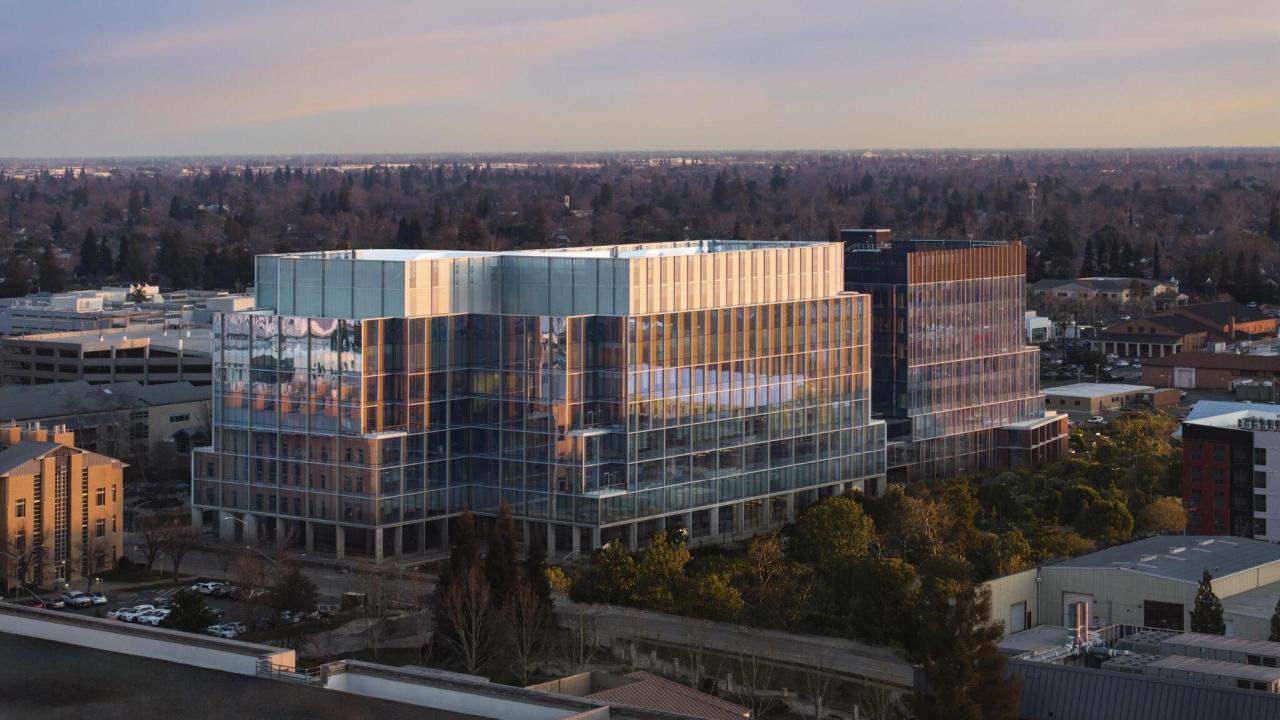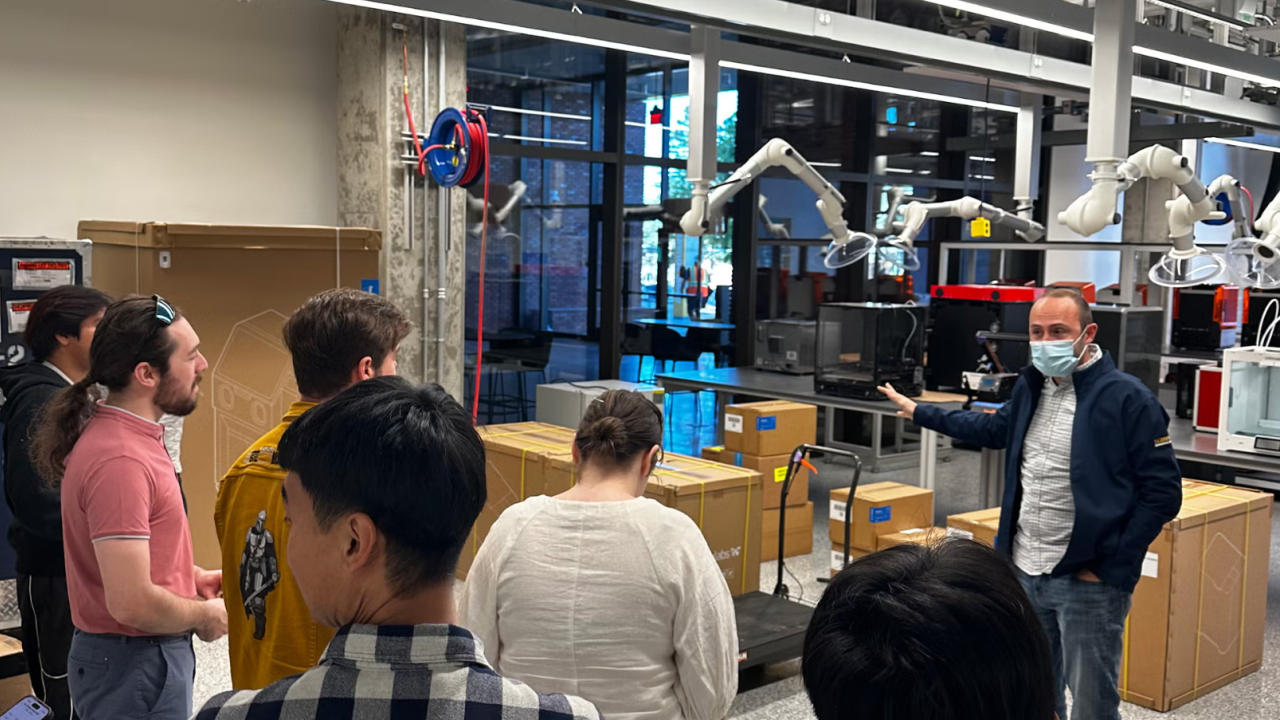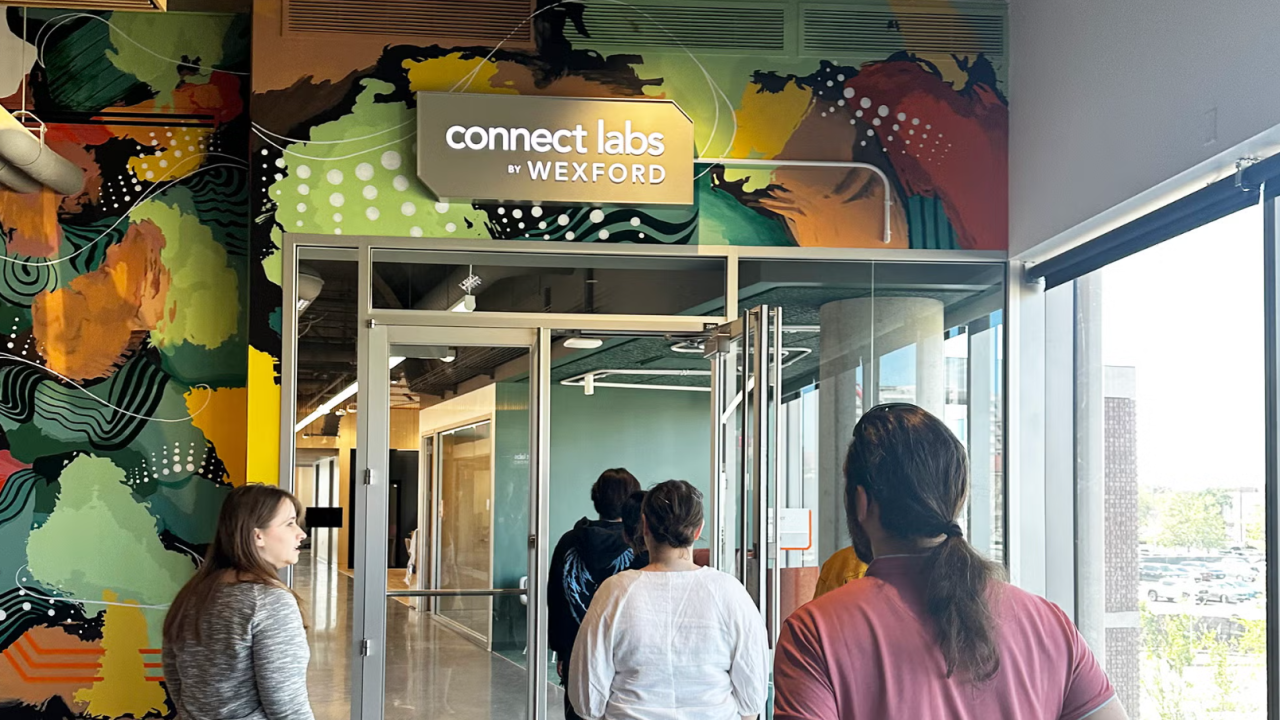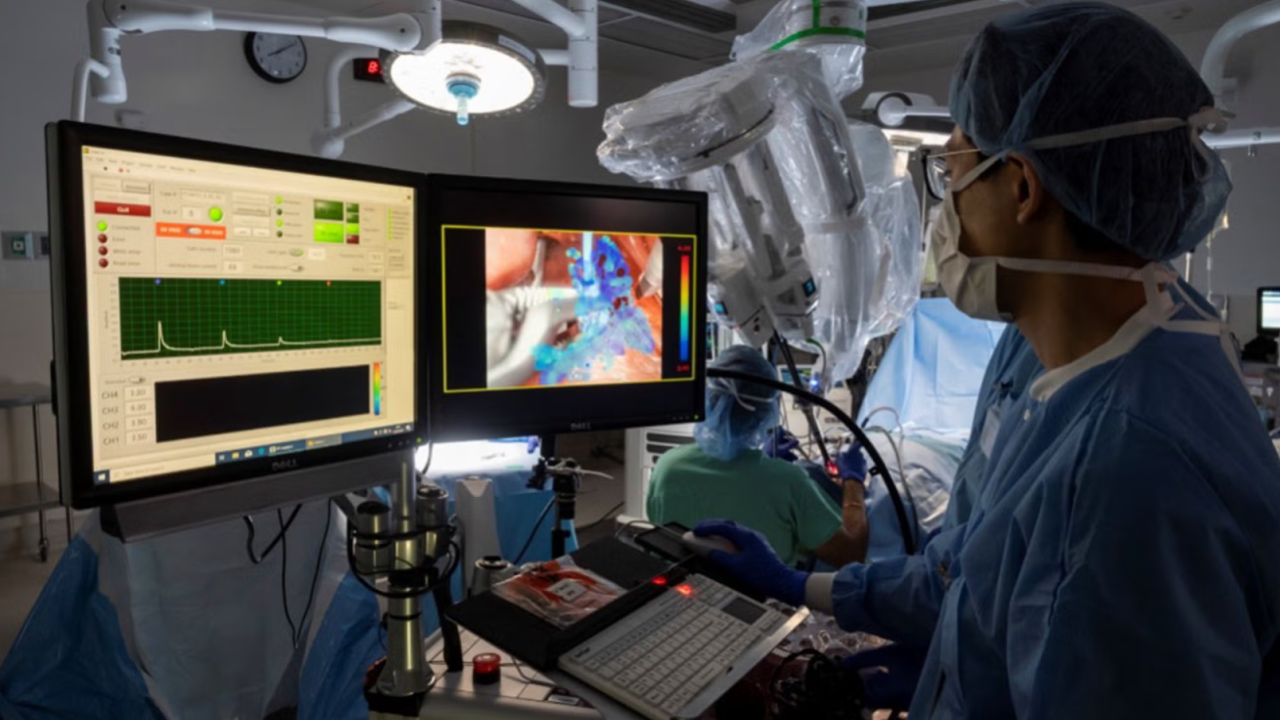
How Aggie Square Is Advancing Innovation in Sacramento
Experts and Entrepreneurs Tackle Pressing Challenges Through Innovative Research and Technology
To a casual observer, the buildings rising on the southwest edge of UC Davis' Sacramento campus might look like just another office complex. But beneath the façade of locally sourced bricks and 20-foot-tall panes of structural glass lies the foundation of something far more ambitious, a marriage of academic know-how and industry can-do.
Aggie Square, developed by Wexford Science & Technology and anchored by UC Davis, is more than a traditional campus expansion. It's a living laboratory for how a research university, private industry and communities can come together to solve society's most pressing challenges.
"Aggie Square is where the university transforms innovation into impact," said Chancellor Gary S. May. "It represents our university's research, teaching and public service mission by bringing together the brightest minds in research with entrepreneurs, industry partners and neighbors, all in one place."
As the district's first buildings prepare for their grand opening on May 2, a diverse lineup of researchers and programs — including several from the Department of Biomedical Engineering — is set to move in, each bringing a unique focus and a shared belief in innovation with purpose.
From cancer research and light-based therapies to bioengineering and medical device development, the next chapter of UC Davis' innovation story is set to unfold at Aggie Square.
Here is a look at three innovative teams and programs connected to the College of Engineering that are getting ready to call it home.

Focusing on a cure
Stem cell, gene editing, bioengineering and translational research are some of the innovations that will take place at Aggie Square.
One of the research groups moving to Aggie Square is the Wang Lab, a prime research hub in stem cell therapy and gene editing for early treatments of birth defects such as spina bifida and Duchenne muscular dystrophy. The lab develops tools and technologies, as well as therapeutics that integrate molecular, cellular, tissue and biomaterial engineering to promote regeneration and restore function.
"We are focused on engineering and developing stem cell/gene therapy, extracellular vesicles/nanomedicine, and extracellular matrix/biomaterial scaffolds to treat a wide spectrum of congenital conditions and acquired diseases," said Aijun Wang, professor of surgery and biomedical engineering. Wang is the vice chair for translational research, innovation and entrepreneurship at the Department of Surgery and co-directs the Center for Surgical Bioengineering at UC Davis. "Our lab specializes in bringing therapeutics from bench to bedside, through innovative discovery, translational and investigational new drug-enabling studies, current Good Manufacturing Practice manufacturing, and conducting clinical trials in both human and companion animal patients."
Wang and his team have been collaborating with the Murthy laboratory at UC Berkeley to develop a much-needed cure for Duchenne muscular dystrophy, one of the most severe types of muscular dystrophy. They are designing a therapy to treat DMD before birth by editing the gene that encodes dystrophin, a key protein in stabilizing muscle fiber.
"We are developing a gene editing therapy that would allow pregnant mothers to give birth to children who are free from Duchenne muscular dystrophy," Wang said.
This groundbreaking work is funded by a $2 million Quest Award from the California Institute for Regenerative Medicine. The DISC-2 Quest Awards Program promotes the discovery of promising new stem cell-based and gene therapy technologies that could lead to broad use and improved patient care.
— Tricia Tomiyoshi


Creating medical devices through biomedical engineering
Imagine this: A student dons a lab coat to work alongside world-class clinicians in the morning, meets with professional entrepreneurs over lunch to transform their clinical observations into a product idea for improving human health, and begins prototyping their engineering solution at a device development facility before sundown.
This is the promise of the new nine-month master's program in medical device development taught entirely at Aggie Square. The first cohort begins in September.
The program, offered by the UC Davis Department of Biomedical Engineering, supercharges hands-on engineering education and entrepreneurial acumen through its location at the expansive innovation district.
"Fundamental to healthcare and medical innovation is truly understanding the needs within, and the proximity of Aggie Square to UC Davis Medical Campus is a unique opportunity that will create critical interactions with patients and health care providers," said John Paderi, a biotech entrepreneur who helped design the master's program as a member of the advisory board to the Department of Biomedical Engineering.
"Coupling this with Aggie Square's ability to support and house industry, especially startup companies, sets the foundation for innovation to advance beyond the graduate program and into companies that can ultimately turn these into products."
By the end of the program, which includes a capstone project to translate UC Davis-developed research into working medical device prototypes, students will have the skills to take engineering concepts from computer-aided design sketches into physical, scalable devices in the private sector.
"The idea is to develop a set of skills in nine months that would take much longer working in the industry," said Steven C. George, chair of the Department of Biomedical Engineering.
— Matt Marcure


Revolutionizing surgery and brain monitoring with AI medical imaging technology
The National Center for Interventional Biophotonic Technologies, or NCIBT, is revolutionizing surgical procedures and brain monitoring using light-based, artificial intelligence-informed technologies. Thanks to a $6.3 million grant from National Institutes of Health, the center moved to Aggie Square at UC Davis on March 19.
NCIBT is advancing two optical imaging technologies developed at UC Davis — interventional fluorescence lifetime imaging (iFLIM) and interferometric diffuse optical spectroscopy (iDOS).
These technologies pair with an AI-deep learning platform to provide real-time guidance of decision-making during medical and surgical procedures.
UC Davis Health surgeons already use FLIM imaging to detect head and neck cancer and brain cancer during surgery.
"We are developing a new technological paradigm for surgical and interventional medical decision-making," said Laura Marcu, founding director of NCIBT and professor of biomedical engineering and neurological surgery. "This technology helps surgeons and other physicians make decisions in real time by assessing the nature of the local tissue. The imaging data from the tissue analysis gets integrated with other imaging data and information from patient's history to optimize the procedure."
The center also supports research and development, clinical application, and training and education of the new technologies. It promotes the adoption of iFLIM and iDOS to improve the quality of interventional health care.
Aggie Square will serve as the hub for the center's training and education programs. NCIBT aligns perfectly with the mission and vision of Aggie Square.
"Aggie Square fosters biomedical innovation and collaborations among engineers, clinician-scientists and industry partners. This synergy promotes the development of clinically valuable tools and their dissemination through teaching, training and commercialization," said Griff Harsh, professor and chair of neurological surgery at UC Davis Health and deputy director and training leader of NCIBT.
— Nadine Yehya
